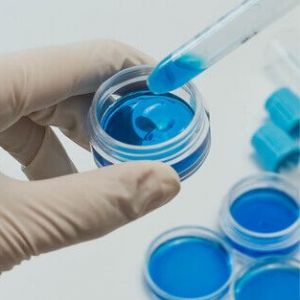Designer Drugs: How Addictive And Dangerous Are They?Posted by Wesley Smith on February 18th, 2021 Do you know the term “Designer Drugs”? As fancy the name sounds, these are as dangerous. Designer drugs are substances that mimic illegal, prohibited drugs. When creating these designer drugs, manufacturers alter the chemical properties so the existing drug regulations don’t apply to them, failing to undergo proper drug testing procedures. These drugs hit the market among the drug users thinking it’s quite trendy and less expensive. But little do they know that these have a different effect on the brain and behavior than the original drugs. Making it more potent and dangerous than the actual drugs, sometimes lethal too! The U.S. Drug Enforcement Administration, DEA, regulates controlled substances and prescription medications and according to DEA, these drugs are classified under psychoactive substances (NPS).
What are the types of designer drugs?There are hundreds of different forms of designer drugs out in the market, but to simplify our understanding the US Drug testing center has divided them in three main broad categories, classified as under: 1. Synthetic cathinones:This category of drugs works as a stimulant by increasing Serotonine and/or Dopamine, also known as “happy hormones” in the These drugs are manufactured by East Asian countries and worldwide distributed in the form of “glass cleaner”, “bath salts”, “plant food” or “research chemicals”. These drugs also come with intense side-effects such as:
2. Synthetic Cannabinoids:A “legal” undercover of cannabinoids like marijuana, these drugs work on the same brain receptors as THC. These have much more elevated effects and intensity than marijuana and include a stronger level of relaxation and goodwill. Apart from all the relaxation and pros, these come with a high pay of:
3. Synthetic Phenethylamines:Generally categorized under hallucinogen, these drugs affect the brain by altering reality, tempering with the sensory input (touch, taste, sight, and sound). Intake of these can make you feel “detached” from your body or “blurry” sensations like “feeling colors” or “touching tastes”. Falling under the above categories are some well-known designer drugs available in the market: MDMA (Ecstasy, XTC, or “E”):Classified as an amphetamine, this empathogen causes an emotional and social imbalance in the intaker’s body. Synthetic marijuana: Also known as “K2” or “Spice”, synthetic marijuana is uptaken through smoking. The main ingredients in this designer drug have been outlawed because users have been seen to have psychotic reactions, such as paranoia, anxiety, and hallucinations when consuming these ingredients. Read here to know about Marijuana Drug Testing. Gravel:A mixture of bath salts, methamphetamine, and Klonopin, gravel has found to have traces of ammonia nitrate, a flammable chemical in fertilizer. Undoubtedly, this drug can create serious issues or even death. Krokodil:Krokodil contains ingredients that mimic the high produced from heroin, found to be extremely dangerous and deadly. Krokodil has shown to have gasoline and paint-thinner as part of their ingredients. Are designer drugs addictive?People using these designer drugs have a tendency to become physically dependent on them especially when an individual has been extensively using synthetic drugs for over a long period of time. Some of the common traits observed in people who have been addicted to these drugs are:
ConclusionThe only reason behind the production of such drugs is high profit since the designer drug comes out quite inexpensive when produced on a large scale. These drugs have high risks as there are no standard procedures or drug testing or regulations for the productions. This means, there is absolutely no certainty what these drugs may contain or what they may cause. Using such drugs in general is a dangerous choice and one must avoid falling into such a lethal trap. Drug testing Corpus Christi believes that we just can’t keep advocating for drug-free communities, instead, we can start with educating our kids. Statistics show that when children educated on dangerous drugs and products make better choices when introduced to them. Training our employees and surroundings can be another step towards awareness. This helps them in making better decisions as well as helps the ones who have been addicted to these lethal drugs. Seek out a rehab center for a medically-safe detox process. Awareness can save lives! Like it? Share it!More by this author |


